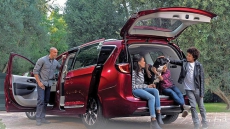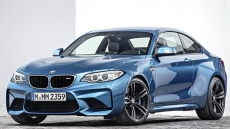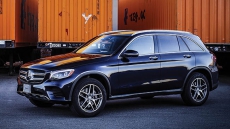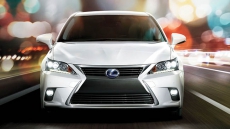Last year, Scion bowed out quietly and gracefully as parent company Toyota folded the youth-marketed North American marque due to slumping sales. As such, vehicles like the former FR-S have been reprocessed into what we drove for this review: the Toyota 86.
The 86 moniker is not new — it has been used in other markets since launch and pays respects to the Japanese automaker’s earlier sporty rear-wheel drive models, such as the AE86 from the 1980s. Toyota is saying the rebrand is “more than a name change,” and I’m inclined to agree — after spending a week testing the car, I was left with a better impression than when I evaluated the Scion version.
One of the biggest upgrades is the switch to front-to-back LEDs for the headlamps, turn signals and taillights. The integrated daytime running lights are LED as well, giving a nice classy touch to the front fascia and a signature look as the car approaches.
The front bumper has been given a total rework — rather than the more traditional, conservatively shaped lower air intake, the centre opening invades most of the cover and is filled with mesh. The adjoining fenders are bulgier and feature stylized round silver 86 badging. New twin five spoke alloy wheels and a slightly reshaped rear bumper complete the exterior updates.
Inside, the cabin gets a slight makeover as well. New higher quality materials find themselves onto the seats (with silver stitching in Canada), instrument panel surround and door trim.
Sitting behind the wheel, there is a strong sense of focus on the driver. The seats are supportive, providing excellent lumbar support, and all controls, including the touch-sensitive 6.1-inch Display Audio System, are easily accessible. Climate control is thankfully manipulated using physical knobs. I normally sit awkwardly in small sport coupes, and in this case I experienced no knee-hitting-steering column issues in the 86.
Performance is still generated by a 2.0-litre horizontally opposed four-cylinder boxer engine, although Toyota has upgraded the pistons and played with the air intake and exhaust manifold resulting in smoother and more efficient power delivery. Output remains 200 horsepower and 151 lb-ft of torque (205 hp and 156 lb-ft standard transmission variants due to different rear differential ratio), but seems to produce a more aggressive and appealing engine note.
Handling was always where the FR-S excelled, and the news is even better for the 86. Spring rates and shock dampening have both been firmed up for flatter cornering, and there’s now a “Track Mode” orienting the Vehicle Stability Control system to yield a more tail happy ride. My presser had the six-speed automatic gearbox equipped, and I have to say I could almost live with a non-manual in this case. The steering-wheel-mounted paddle shifters were quick and responsive, displaying minimal lag during downshifts and held the gear while accelerating.
The Toyota 86 is available in a single grade, the only choices being standard ($29,580) or auto ($30,780) transmission.
Highlights (as tested):
MSRP: $30,780
Motor: 2.0-litre four cylinder
Horsepower: 200 @ 7,000 rpm
Torque (lb-ft): 151 @ 6,400 rpm
Gearbox: six-speed automatic transmission
Layout: front engine, rear-wheel drive
Fuel economy: 10.0 L/100 km mixed city/highway (observed)








